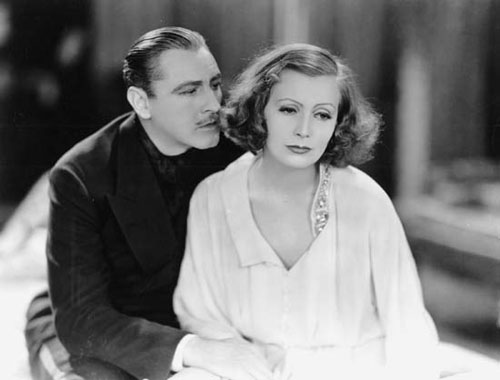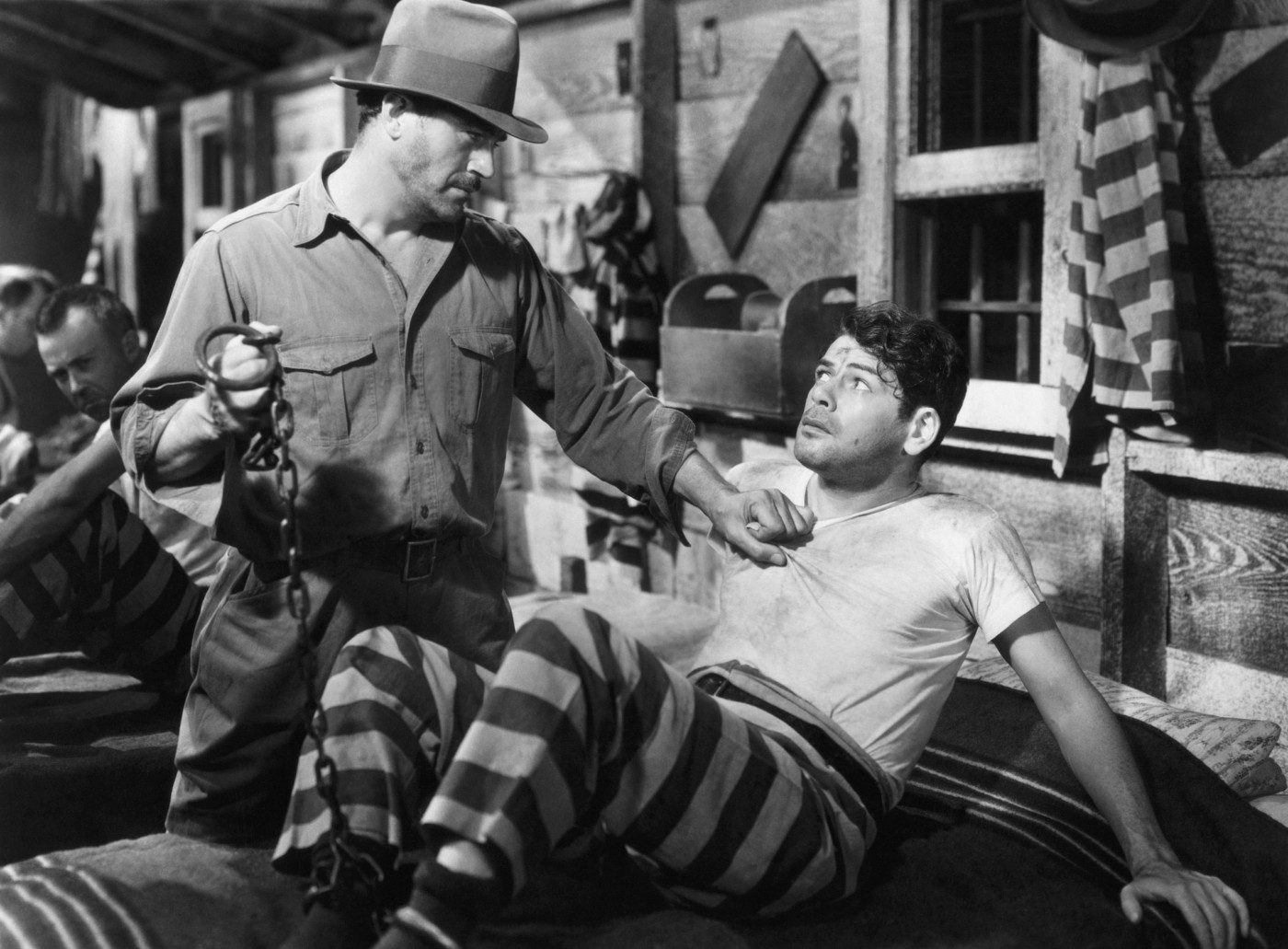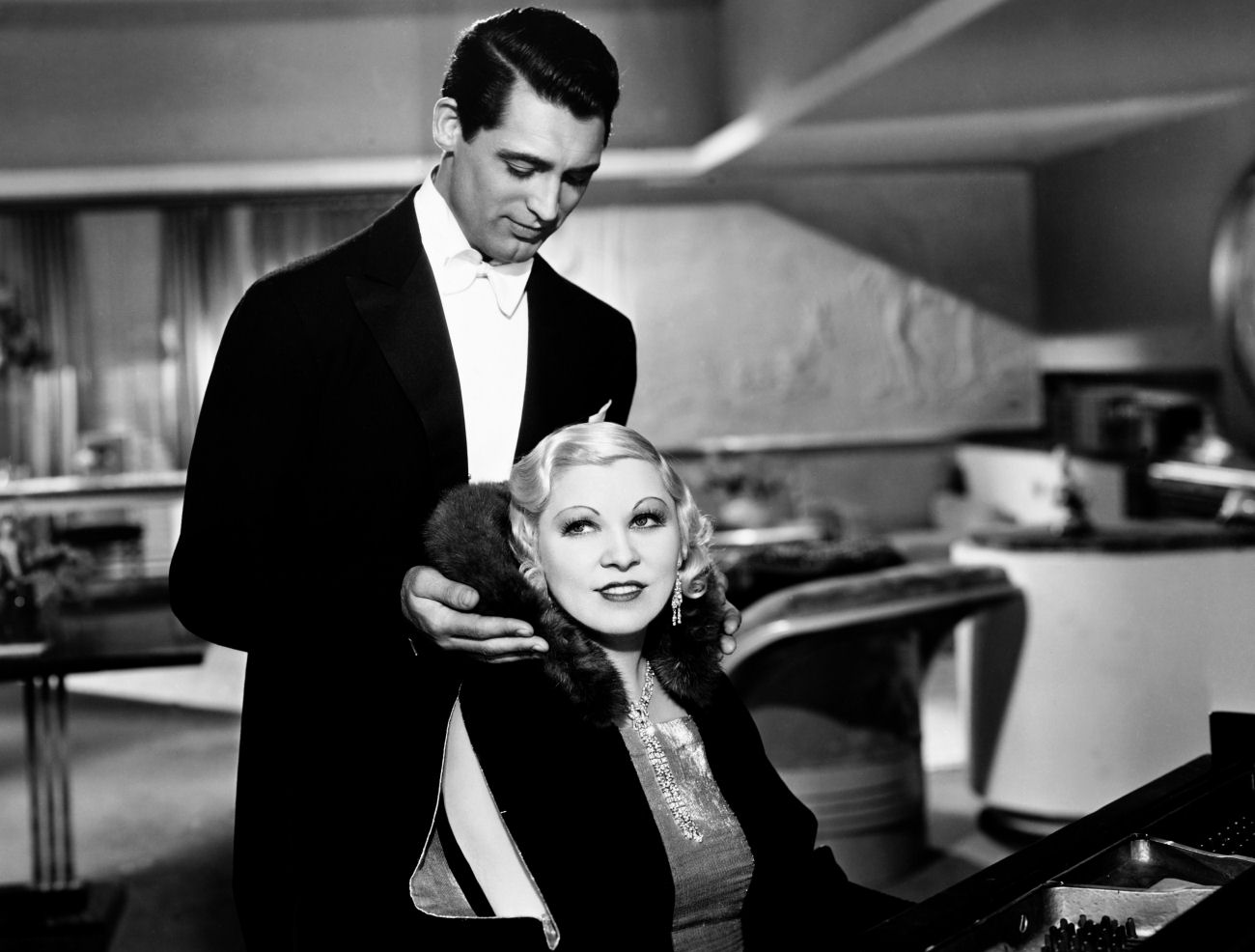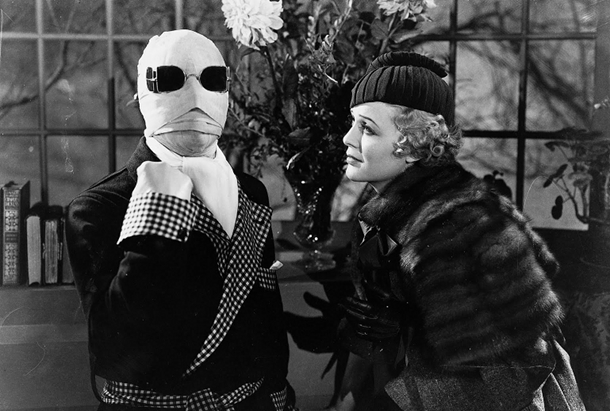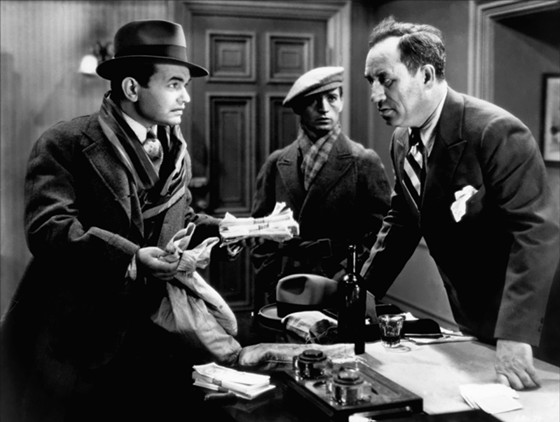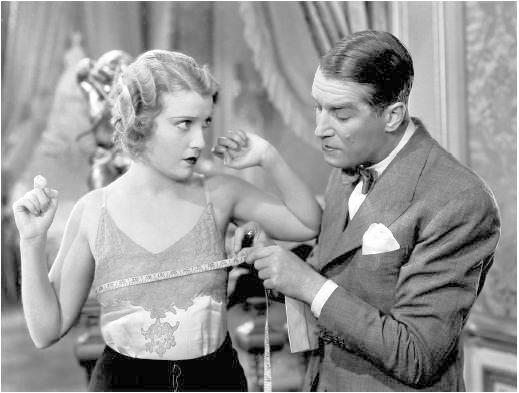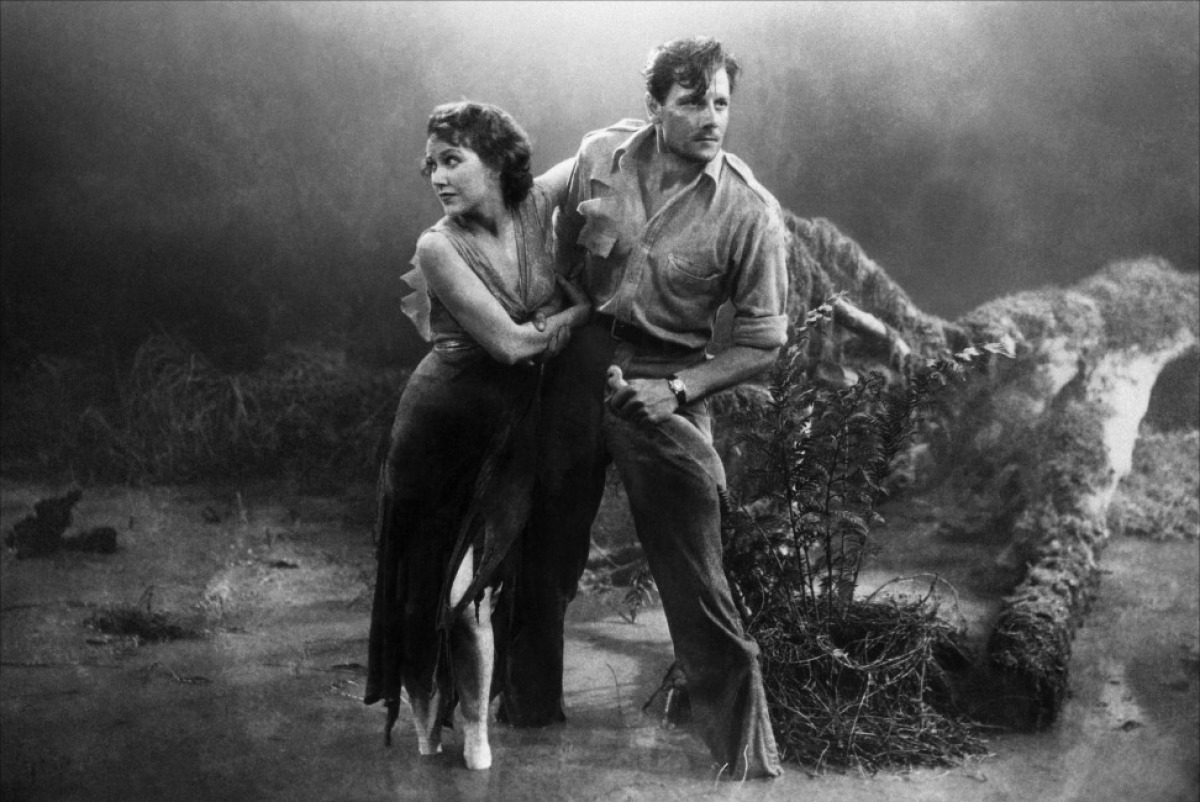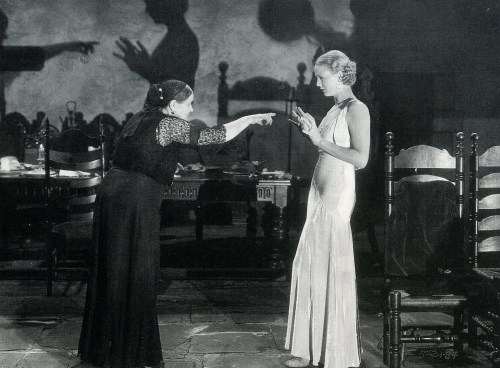11. Grand Hotel (1932)
Often treated as the first all-star movie, MGM’s production takes place in Berlin’s glamorous Grand Hotel. There we find an anguished ballerina ( Greta Garbo), a bankrupt aristocrat who has resorted to common thievery ( John Barrymore), a dying old man ( Lionel Barrymore), a corrupt industrial tycoon (Wallace Beery) and a young, tough stenographer (Joan Crawford).
In 1932 Hollywood, the idea of having multiple stories in a film, without necessarily separating them in installments, was quite original and with its competent script and wonderful performances, the film won as Best Picture of the Year.
It is interesting to see how the characters’ lives end up as elements of a bigger picture, but even disregarding the primitive anthology film trace, Grand Hotel manages to hold its viewer, with its more than impressive performances and luxurious sets, that carry the MGM seal of quality.
12. I Am a Fugitive from a Chain Gang (1932)
Based on the memoirs of Robert E. Burns, a wrongly convicted man, Mervyn LeRoy’s I Am a Fugitive from a Chain Gang is a powerful meditation on the frailty of the justice system. The realistic depiction of the brutal chain gangs is not only revolting, but downright scary when one realizes virtually anyone could have been in the protagonist’s shoes.
The physical and emotional pain James Allen endures is brilliantly conveyed by Paul Muni, in an Oscar-nominated performance. The confusion caused by his sudden loss of freedom, the agony from the complete absence of hope and his slow decline into darkness are hard-hitting blows, but nothing will quite prepare you for one the most chilling Hollywood endings ever conceived.
13. I’m no Angel (1933)
With practically full production control over I’m no Angel, Mae West brought about what many call her finest screen effort. It has all her signature gear: sassy and provocative dialogue, suggestive musical acts and of course a naive young man (Cary Grant) to fall prey to her seduction.
The main couple has great chemistry riding along the unimportant plot and firing spicy lines filled with innuendo. An unlikely film star, West proves in this venture why she became an icon even with her less-than-star-like looks and figure. The film also has its fine share of comic moments, but they weren’t enough to disguise the “immoral” mood, and it soon became one of the many productions deemed responsible for the enforcement of the Motion Picture Production Code the following year.
14. The Invisible Man (1933)
In his first starring role, Claude Rains had to direct all acting efforts into his voice. As an ambitious scientist that finds a way to become invisible, but ends up losing his sanity, the actor developed his character using solely his tone of speech and a memorable sadistic laugh. Still, Rains did is so well, one will likely remember his performance, even though he doesn’t show his face for more than 5 minutes during the whole feature.
James Whale’s classic also offers some amazing special-effects, that will leave many present-day audience members wondering how they could they have been made in the CGI-less Era of the early 1930’s. The films is one of the less-known from the Universal Horror series, but just as good if not even better than the most famous monster films.
15. Island of Lost Souls (1932)
Island of Lost Souls has Charles Laughton playing a scientist who experiments with live animals in evolution and ends up creating a group of human-like creatures ready to revolt against its mentor.
Erle C. Kenton’s version of H. G. Wells novel, The Island of Dr. Moreau, was the first to hit the screen, and even after 80 years, it remains the best Hollywood ever came up with. The film is a testament to the startling, and often disturbing, nature of Pre-Codes, and the fact that they still manage to provoke us only highlights their enormous impact on the public and critics of the time.
16. Little Caesar (1931)
“Mother of mercy, is this the end of Rico?” the famous line delivered by Edward G. Robinson was voted as one of the top 100 most iconic quotes of Hollywood History by the American Film Institute. As Rico, Robinson gave a career-defining performance that would ultimately lead to his status of one of the most recognizable faces of classic gangster films.
The seminal mob flick follows the ups and downs of criminal life in Prohibition Era, an eye-catching subject for the public of the time, who read about racketeers on the loose everyday on papers, hence the curiosity to find out how these figures managed to ride high even when the country was collapsing. Directed by Mervyn LeRoy, Little Caesar (alongside The Public Enemy) helped Warner Brothers build its reputation as the ‘toughest studio on town’.
17. Love Me Tonight (1932)
The renowned Pre-Code musical finds Maurice Chevalier as a humble tailor, who masquerade as a Baron, charms a beautiful but reclusive princess played by Jeanette MacDonald.
From its famous opening sequence of the city of Paris, as it awakens, with its diverse sounds and faces, to its rendition of standards such as the unforgettable “Isn’t it Romantic?”, Love Me Tonight delivers a romantic, escapist and fun experience. The supporting cast is also note-worthy, with Myrna Loy as naughty countess and experienced character actor, C. Aubrey Smith, playing an old noble.
One cannot deny, though , that the heart of the film is in its memorable soundtrack and on-point directing by Rouben Mamoulian. The filmmaker sets a fast, entertaining rhythm, adding some spice with lots of sexual innuendo and class satire.
18. The Most Dangerous Game (1932)
Old Hollywood’s inclination towards exotic places recreated in Californian back lots brought us many stinkers, but before passing up on this B film, its best to keep in mind the men behind it, Irving Pickel and Ernest B. Schoedsack, were the same responsible for the timeless classic King Kong, which would come out a year later.
The film is barely an hour long, but proves itself remarkably absorbing and exciting, thanks largely to its sinister plot about a skilled, but insane huntsman, who pretends to give shelter to shipwrecks on his island, only to indulge himself in hunting his guests. Joel McCrea, Fay Wray and Leslie Banks star in the low-budged gem, which surely deserves more fame, if not for its gothic sets and first rate soundtrack by Max Steiner, then at least for having one of the most chilling storylines Hollywood ever adapted.
19. The Old Dark House (1932)
The mother of all haunted-house films, James Whale’s overlooked production, offers the perfect mix of horror and dark comedy. The simple premise introduces five characters who are forced to seek shelter from a storm at a sinister house, inhabited by the eccentric Femms.
Among the hosts they encounter a religious extremist (Eva Moore), an effeminate neurotic (Ernest Thesiger) and a mute butler ( Boris Karloff), not to mention some other locked-up family members, who evidently escape to frighten the travelers. Melvyn Douglas, Charles Laughton and a young Gloria Stuart are also part of the cast. All the players deliver great performances compatible with the stagy and parodic tone Whale aimed to set. The final result is a practically perfect horror farce.
20. The Public Enemy (1931)
James Cagney’s breakthrough performance, in William Wellman’s classic The Public Enemy, would define the actor’s tough-guy screen persona. He plays Tom Powers, a smooth-tongued criminal who makes big money as a bootlegger during Prohibition, but ultimately ends up involved in a gangster war that threatens his life.
Although it’s clear that Powers was born to a decent family and had a proper upbringing, he inevitably takes the ‘wrong way’ in life. On this wise, the film scores high by avoiding the commonplace of social injustice as a cause for gangster life: Powers simply seems to have been born for evil.
Filled with stylish shootouts sequences and important Old Hollywood names like Cagney, Jean Harlow and Joan Blondell, surprisingly one of the best remembered players in the film, is a young Mae Clarke, in a small unaccredited part. Notwithstanding her starring roles, Clarke will forever be associated with the infamous scene in which Cagney smashes a grapefruit into her face. The incident made Film History as a representation of the violence in gangster films, especially against women.
